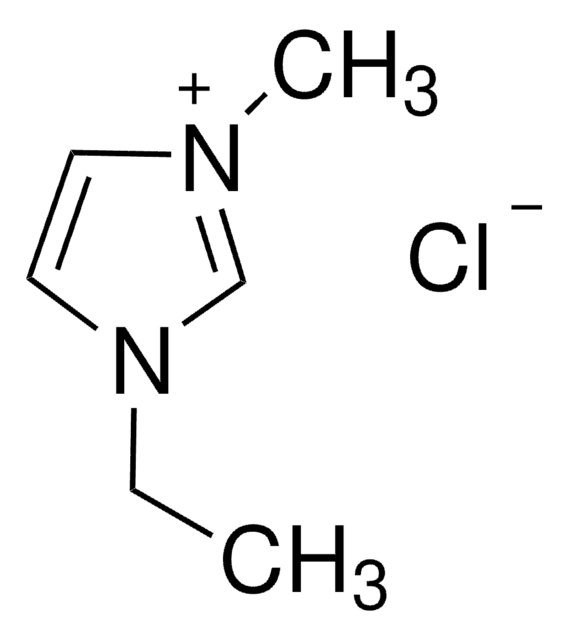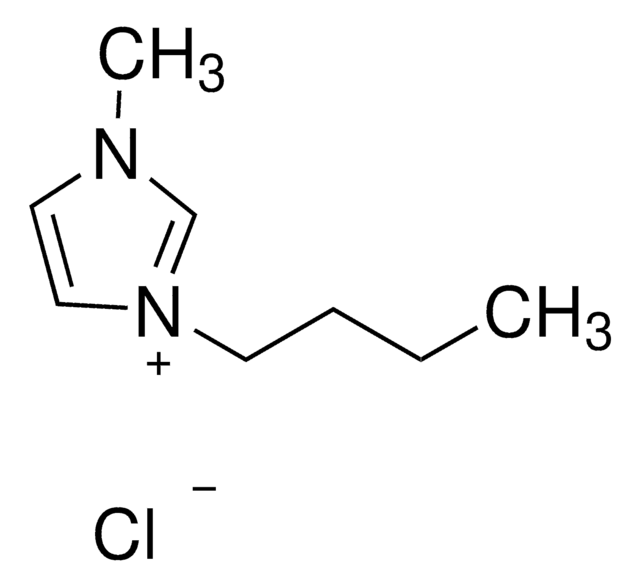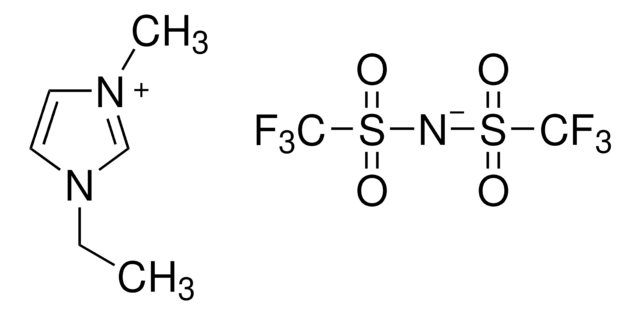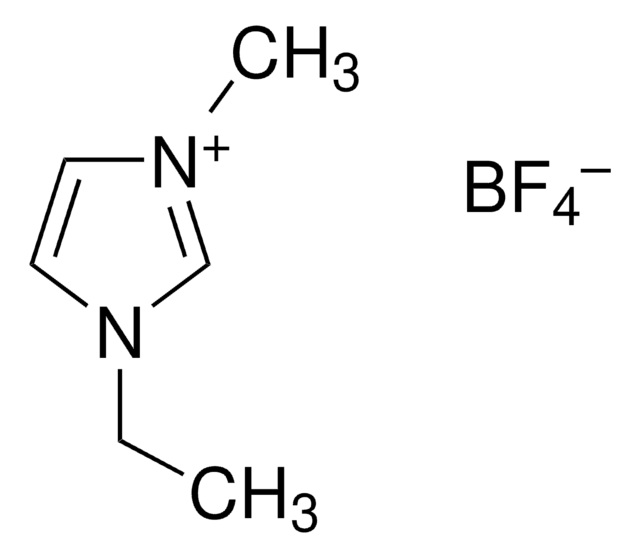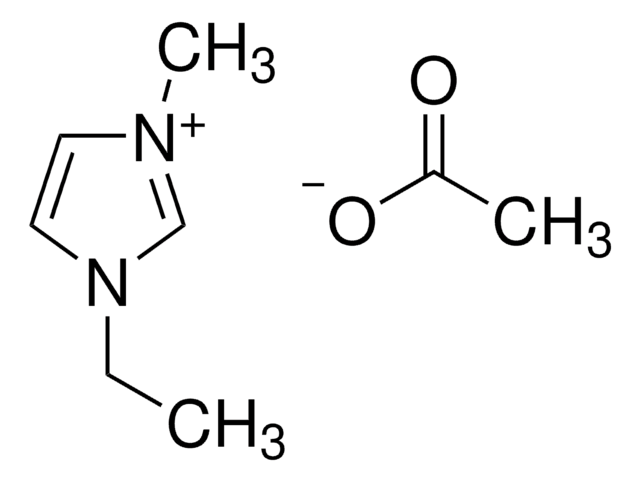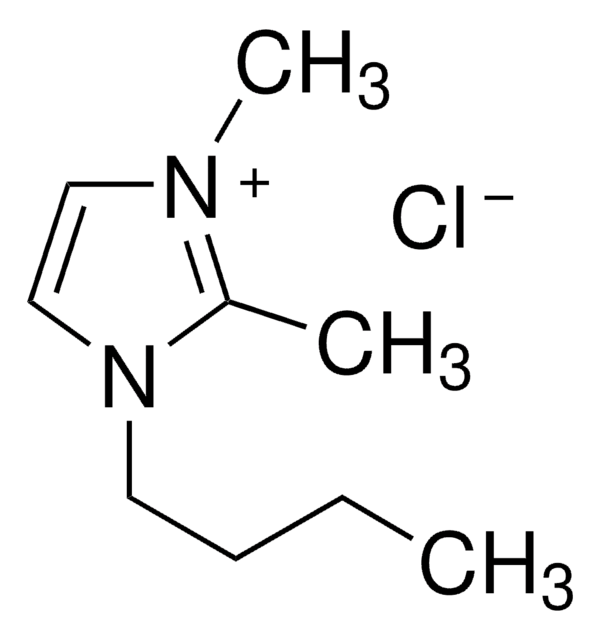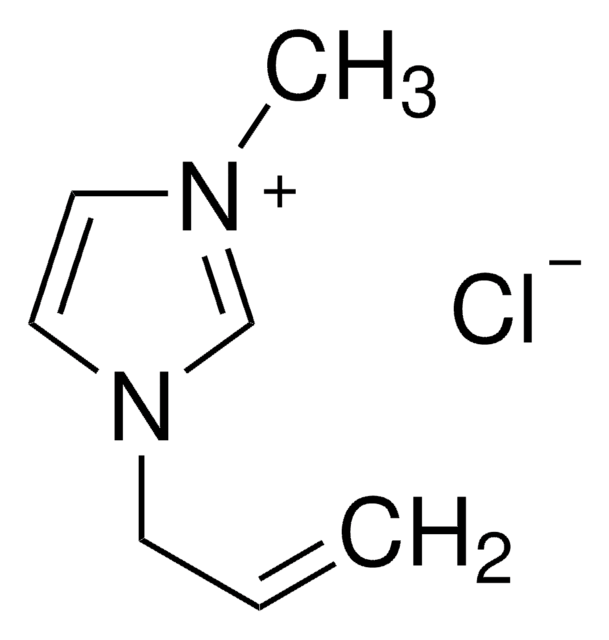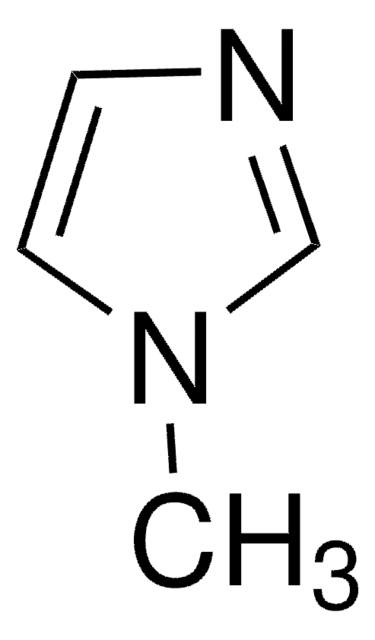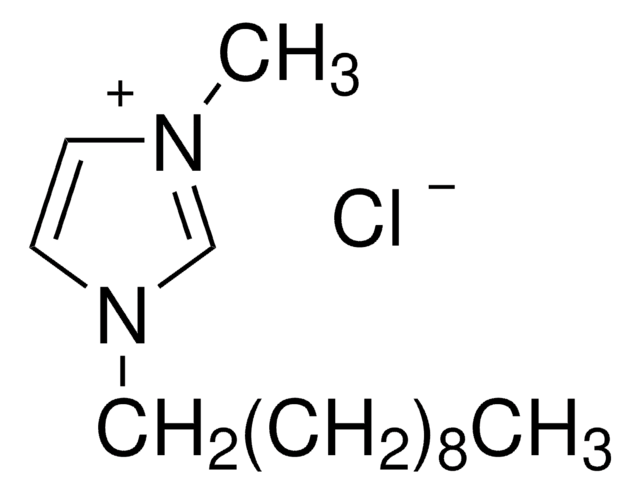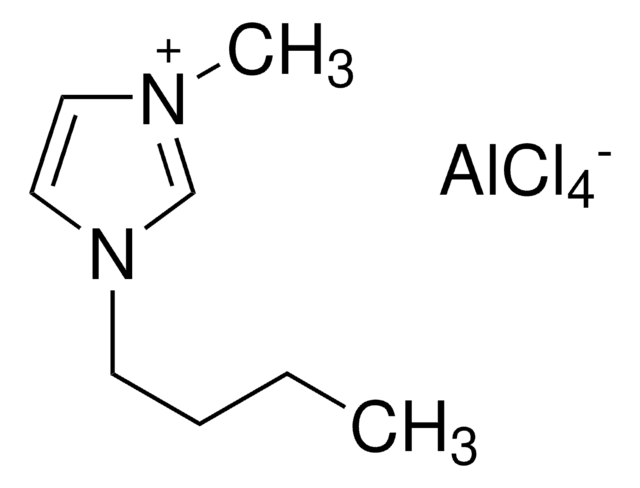900771
1-Ethyl-3-methylimidazolium chloride
>99%
Synonyme(s) :
1-Ethyl-3-methyl-1H-imidazolium chloride, 1-Methyl-3-ethylimidazolinium chloride, N-Methyl-N′-ethylimidazolium chloride
About This Item
Produits recommandés
Niveau de qualité
Essai
>99%
Forme
crystals
Caractéristiques du produit alternatif plus écologique
Safer Solvents and Auxiliaries
Catalysis
Learn more about the Principles of Green Chemistry.
sustainability
Greener Alternative Product
Impuretés
≤2000 ppm H2O
Pf
77-79 °C (lit.)
Densité
1.189 g/cm3
Application(s)
battery manufacturing
Autre catégorie plus écologique
Chaîne SMILES
[Cl-].CCn1cc[n+](C)c1
InChI
1S/C6H11N2.ClH/c1-3-8-5-4-7(2)6-8;/h4-6H,3H2,1-2H3;1H/q+1;/p-1
Clé InChI
BMQZYMYBQZGEEY-UHFFFAOYSA-M
Vous recherchez des produits similaires ? Visite Guide de comparaison des produits
Description générale
Application
Produit(s) apparenté(s)
Mention d'avertissement
Warning
Mentions de danger
Conseils de prudence
Classification des risques
Acute Tox. 4 Oral - Eye Irrit. 2
Code de la classe de stockage
11 - Combustible Solids
Classe de danger pour l'eau (WGK)
WGK 1
Point d'éclair (°F)
370.4 °F - closed cup
Point d'éclair (°C)
188 °C - closed cup
Faites votre choix parmi les versions les plus récentes :
Certificats d'analyse (COA)
Vous ne trouvez pas la bonne version ?
Si vous avez besoin d'une version particulière, vous pouvez rechercher un certificat spécifique par le numéro de lot.
Déjà en possession de ce produit ?
Retrouvez la documentation relative aux produits que vous avez récemment achetés dans la Bibliothèque de documents.
Les clients ont également consulté
salt ionic liquid as a catalyst
Articles
Dr. Sun reviews the recent advances in solid-state rechargeable batteries and cover the fundamentals of solid electrolytes in solid-state batteries, the theory of ion conduction, and the structures and electrochemical processes of solid-state Li batteries.
Here, we present a short review of ionic liquid electrolytes used in state-of-the-art rechargeable batteries including high performance and low-cost aluminum batteries, non-flammable Li-based batteries, and high-cycling and stable dual-graphite batteries. We also outline the key issues explored so as to identify the future direction of IL development.
Notre équipe de scientifiques dispose d'une expérience dans tous les secteurs de la recherche, notamment en sciences de la vie, science des matériaux, synthèse chimique, chromatographie, analyse et dans de nombreux autres domaines..
Contacter notre Service technique